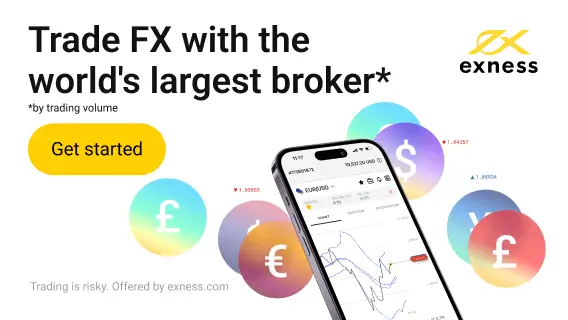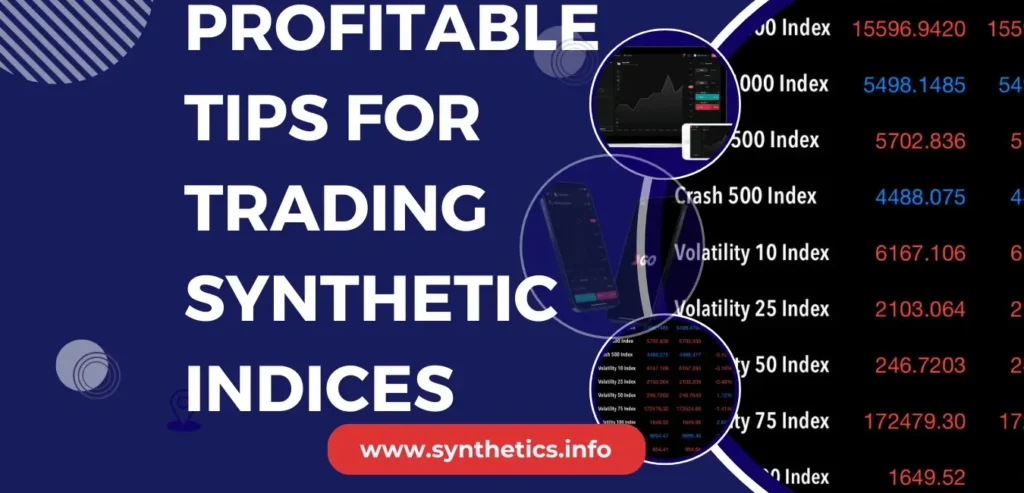I started trading synthetic indices in 2016. In the ten years since then, I’ve seen a lot. I’ve seen traders start, get burnt, claim Deriv is a scam, and stop trading them completely. I’ve seen fake account managers and scammers. And I’ve also seen traders withdraw thousands upon thousands of dollars from synthetic indices.
On a personal scale, I’ve been through everything — fake two-minute strategies, bots, signal groups, you name it.
Armed with this experience, I want to share some tips that will improve your profitability when trading synthetic indices on Deriv. These are not fluff — they are hard-learned lessons, and it’s exactly the kind of stuff I wish someone had told me when I was starting out.
New to synthetic indices?
Synthetic indices are algorithm-based markets offered by Deriv that mimic real-world volatility — but without news or central bank influence. They run 24/7 and include popular markets like Volatility 75 Index, Boom & Crash, and Range Break.
👉 If you’re a complete beginner, start here first: Synthetic Indices Explained — this guide covers how they work, what moves them, and which ones to trade.
 Read Review
OPEN AN ACCOUNT
Read Review
OPEN AN ACCOUNT
Min Deposit: USD 1
Total Pairs: 100+
Regulators: MFSA, LFSA, VFSC, BVIFSC
1️⃣ Practice Trading Synthetic Indices on Demo First (The Right Way)
Trading synthetic indices is very different from trading forex or stocks. Indices like Volatility 300 (1s) or V75 can move thousands of points in seconds — if you don’t respect that volatility, your account can disappear fast.
That’s why it’s essential to practice trading synthetic indices on demo first. This is where you learn how these markets move — and where most beginners make their first mistakes without losing real money.
👉 But here’s where many traders go wrong:
✅ Don’t practice on a $10,000 demo account if you plan to deposit $100 or $200 — it will give you false confidence.
✅ Reduce your demo balance to match what you’ll actually fund — this way, you’ll understand real lot sizes, margin usage, and how many positions your equity can handle.
👉 And treat your demo account like it’s real. Don’t open random trades just because it’s “play money.” The habits you build in demo will carry over to live trading.
👉 The demo is also the best place to:
- Practice trading multipliers on synthetic indices
- Test scalping setups on V75, Boom 1000, and other fast-moving indices — without risking your real capital.
👉 Not sure which indices move fast and which move slow?
Check out:
🔥 Most Volatile Synthetic Indices on Deriv
🧊 Least Volatile Synthetic Indices on Deriv
👉 And if you need help setting up your demo account, follow this guide:
📘 How to Open a Deriv Demo Account on MT5
Once you can trade consistently and with discipline on demo, then you’re ready to move to your live account.
2️⃣ Focus On 1–2 Indices First
Deriv offers a buffet of synthetic indices — Volatility, Boom & Crash, Range Break, Step Index, Jump Indices.
👉 But don’t get greedy. Pick one or two indices and master them first.
Learn how V75 moves during London & NY sessions. Notice when Boom 1000 spikes. Understand how Range Break 100 compresses and then explodes.
✅ Focusing helps you master market behavior — spreading yourself thin across 5 charts often leads to blown accounts.
👉 Not sure which indices to start with?
Check out this guide: Best Synthetic Indices for Beginners on Deriv — it breaks down which ones are easiest to trade when you’re starting out.
Best Synthetic Indices to Trade (My Picks):
For beginners → Crash 500, Step Index (smoother movements)
For fast scalping → Boom 1000, V75 (1s)
For breakout traders → Range Break 100
For trending markets → Volatility 75 Index, Volatility 25 (1s)
👉 You can explore all of them, but focus your first 100 trades on no more than 2 indices.

3️⃣ Have A Profitable Synthetic Indices Trading Strategy
There is no “holy grail” strategy — and don’t fall for anyone selling you one.
Some traders win with pure price action, others use RSI + EMA confluence, and others scalp with simple engulfing candles + trend filters.
👉 My advice:
✅ Test 2–3 strategies on demo first
✅ Try scalping if your time is limited
✅ Try swing trading if you can hold trades longer
✅ Track at least 50 trades before deciding what works for you
📓 Keep a trading journal — log entry reason, lot size, SL/TP, screenshots, outcome.
👉 Over time, your journal will tell you which strategy fits your style — that’s your personal edge.
I highly recommend studying when your chosen index moves best — here’s my full
Best Time to Trade Volatility Indices guide based on real data
4️⃣ Build Discipline With a Trading Journal
Your trading journal is your accountability partner.
Here’s what I log:
✅ Index traded (e.g. V75 (1s))
✅ Time of trade
✅ Entry reason
✅ Screenshot
✅ Lot size + % risk
✅ SL/TP levels
✅ Outcome
✅ What I did well / What I messed up
I review mine weekly — that’s how I learned that trading late into NY session was costing me profits.
👉 If you want to trade synthetic indices profitably, this is non-negotiable — your journal will teach you more than any YouTube video.

5️⃣ Understand Risk Management = Survival
Forget “how much can I make” — first, ask “how do I survive.”
✅ Risk 1–2% per trade
✅ Don’t revenge trade after a loss
✅ Don’t emotionally increase your lot size
✅ Stick to a daily loss limit and stop trading if it’s hit
👉 If you lose 3 trades in a row, I recommend stopping for the day. It saved me from many account blowouts in the past.
👉 Understanding lot sizes is key to managing your risk when trading Synthetic Indices. If you want to see the exact minimum lot sizes for every Volatility Index, plus how much each point is worth in dollars, check our full Volatility Indices Lot Size & Dollar Value Guide.
6️⃣ Avoid the “All-In” Trap After Losses
The worst habit I had in my early years was doubling my lot size after every loss to “win it back fast.”
👉 That is a fast-track to blowing 3 weeks of profits in one bad session.
✅ Set a rule for yourself: after X consecutive losses, walk away.
✅ My personal rule → if I lose 3 trades in a row, I close the platform for the day.

7️⃣ Withdraw Your Profits Often
Withdrawing your profits regularly is both a financial and psychological edge.
✅ It reminds you this is real money, not just numbers on a screen.
✅ It rewards discipline.
✅ Even if it’s $20–$50 per week — cash it out.
👉 This habit kept me grounded and helped me avoid the “gamble it all because I’m on a roll” mindset that wipes out many traders.

⚠️ Be Very Careful With Account Managers Offering to Trade Your Synthetic Indices Account
You’ll see them everywhere — “account managers” on social media (many from India and other regions) claiming they can trade your Deriv account and share profits with you.
At first glance, it sounds great — no need to find your own strategy or watch charts. Passive income, right?
Wrong.
👉 The reality is that most of these “account managers” are just gamblers looking to trade someone else’s money with no risk to themselves. They’ll experiment with high-risk trades on your account. If they win, they’ll want a cut. If they lose — and many do — they simply disappear and move on to the next victim.
Should you do choose to let someone trade your account (which I strongly advise against), make sure:
- You only give access to an account with funds you are 100% prepared to lose.
- You ask them to provide an investor password to a real account they have traded before — so you can verify their results.
👉 But in my experience? You’re far better off learning to trade your own account with discipline and risk management.the account(s) they have traded successfully before so you can evaluate their performance.

🎁 Bonus: My Go-To Synthetic Indices Trading Strategy (V75 on MT5)
If you’ve been searching for a synthetic indices strategy that actually works, here’s one I’ve used consistently — and it’s simple enough for beginners to start with.
👉 I trade this setup mainly on Volatility 75 (1s) Index using MT5:
✅ Timeframe: M1 (1-minute chart)
✅ Trend filter: 200 EMA — I only trade in the direction of the trend
✅ Confirmation: RSI (14) for overbought/oversold
✅ Entry trigger: Engulfing candle at micro pullback
✅ Stop Loss: 40,000 points
✅ Take Profit: 120,000 points (3:1 RR)
When I trade this setup:
- I avoid ranging sessions — I focus on sessions with good momentum (for V75, 08:00–12:00 GMT+2 works well).
- I take fewer trades but go for quality setups with a defined risk-to-reward.
👉 If you’re wondering how to trade synthetic indices on MT5, this type of structured strategy will serve you far better than random “signals” or gambling with no plan.
👉 And if you’re searching for a synthetic indices trading strategy PDF, this exact setup is one of the first I recommend testing on your own demo account.
✅ Keep your trades simple.
✅ Trade with the trend.
✅ Only take trades when you have full confirmation.
👉 This is not the “holy grail,” but it’s a great starting point to build your edge.
🔗 Related Guides
📊 How To Trade Volatility Indices on Deriv
→ A complete beginner-to-advanced guide to volatility indices — platforms, lot sizes, strategy tips, and more.
⚖️ Lot Sizes For Synthetic Indices
→ Know exactly what lot size to use on each synthetic index — essential for risk management and small account trading.
📲 Platforms for Trading Synthetic Indices on Deriv
→ Compare the different platforms available on Deriv for trading synthetic indices — MT5, Deriv X, cTrader, and more.
📦 Advantages and Disadvantages of Synthetic Indices
→ Understand the key pros and cons of trading synthetic indices — what makes them unique, and what risks to manage.
💹 Synthetic Indices vs Forex
→ How do synthetic indices compare to forex? Learn the key differences in market behavior, trading style, and risk.

Conclusion
Synthetic indices can be tricky to trade — they move fast, and they punish mistakes. But if you religiously follow the tips I’ve shared here, you’ll massively increase your chances of becoming a profitable trader in a short space of time.
👉 Now I’d love to hear from you:
What tips, tricks, or lessons have worked for you when trading synthetic indices?
Drop them in the comments — your experience could help someone else avoid costly mistakes.

FAQs On Tips For Trading Synthetic Indices
Use proper lot sizing, risk no more than 1–2% of your account per trade, and always set a stop loss. Avoid revenge trading, stick to a daily loss limit, and withdraw profits regularly to stay disciplined.
Yes — common strategies include trend trading, scalping, breakout trading, and price action setups. The key is to test different approaches on demo first and find a strategy that fits your trading style and risk tolerance.
Stick to your trading plan, risk small amounts per trade, and follow a set routine. Avoid chasing losses or increasing lot size emotionally, and take regular breaks to stay clear-headed and disciplined.
Yes — trading synthetic indices can be profitable if you follow a solid strategy, manage risk carefully, and stay disciplined. Many traders earn consistent profits, but the markets are volatile and can quickly lead to losses if you trade without a plan.
Yes, Deriv supports the use of trading bots and automated trading systems through its API (Application Programming Interface). Traders can develop or use existing trading algorithms to automate their synthetic indices trading strategies on the Deriv platform.
 Read Review
OPEN AN ACCOUNT
Read Review
OPEN AN ACCOUNT
Min Deposit: USD 1
Total Pairs: 100+
Regulators: MFSA, LFSA, VFSC, BVIFSC





💼 Recommended Brokers to Explore
Other Posts You May Be Interested In
MT5 vs Deriv X: Which Platform Should You Use in 2025? 💻
📅 Last updated: June 27, 2025 ✍️ Written by: Jafar Omar ✅ Fact-checked by: Taylor [...]
⏱️ When to Trade Each Volatility Index on Deriv — Data-Driven Session Map
📅 Last updated: June 13, 2025 ✍️ Written by: Jafar Omar ✅ Fact-checked by: Taylor [...]
Best Local Payment Methods for Funding & Withdrawing on Deriv (By Country 2025)
📅 Last updated: June 12, 2025 ✍️ Written by: Jafar Omar ✅ Fact-checked by: Taylor [...]
How to Connect Your Deriv Account to the Bot Platform (Step-by-Step)🤖
📅 Last updated: June 22, 2025 ✍️ Written by: Jafar Omar ✅ Fact-checked by: Taylor [...]
How to Open a Deriv Demo Account on MT5 – Step-by-Step Guide (2025) ✔
📅 Last updated: March 4, 2025 ✍️ Written by: Jafar Omar ✅ Fact-checked by: Taylor [...]
3 Pips Synthetic Indices Strategy For Boom & Crash Indices 📊
📅 Last updated: October 11, 2023 ✍️ Written by: Jafar Omar ✅ Fact-checked by: Taylor [...]